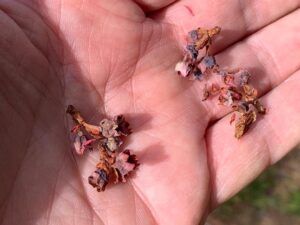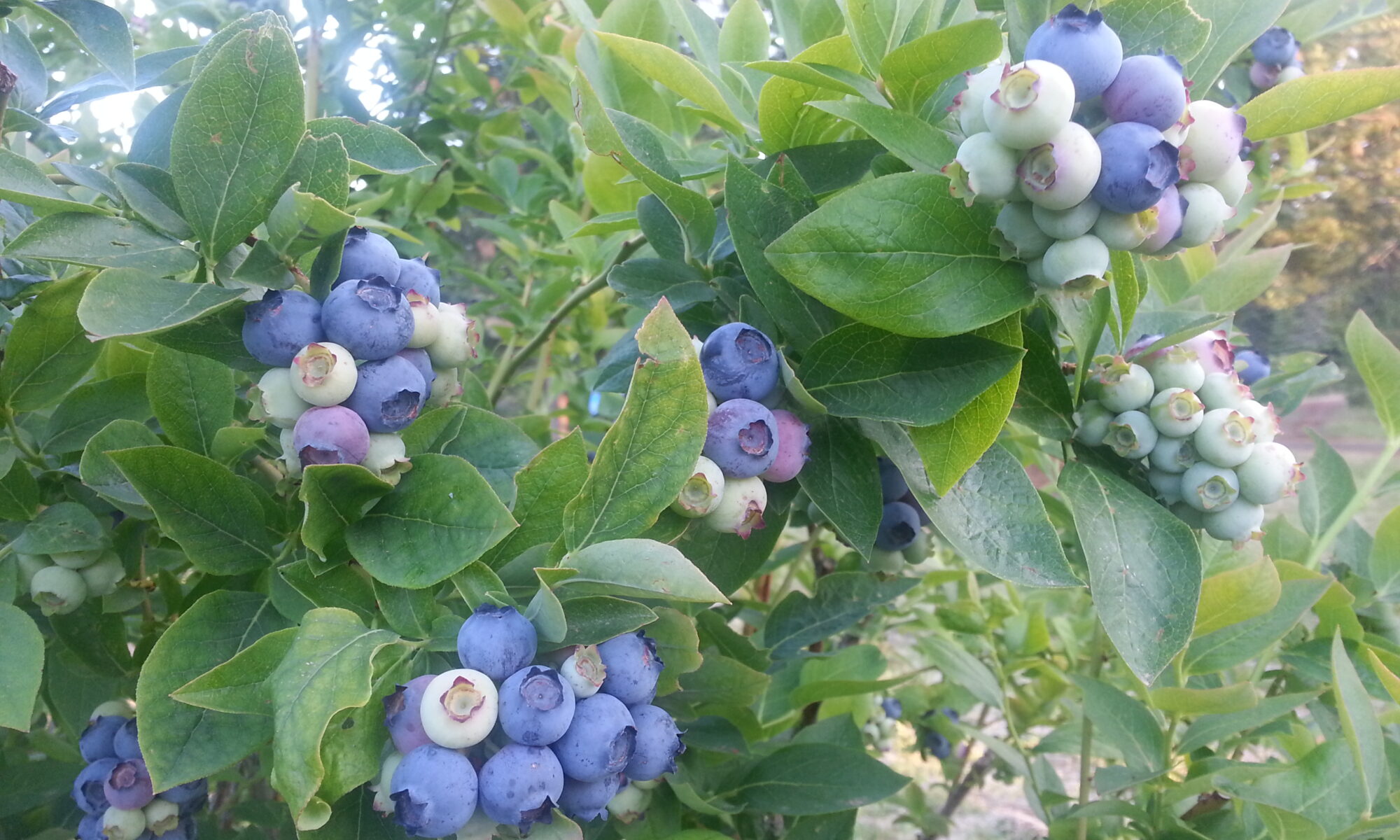What happened to the crop in 2022?!
On the morning of April 11, 2022 right before sunrise, we experienced a few hours of sub-freezing temperatures. By the time the sun came up the damage was done, and 99 percent of our berries were dead. Late hard frosts are not uncommon in our growing area, and John knew this freeze was coming; it had been forecast for a week. In the past we had always survived these cold temperatures, but this time was different. A changing climate had started this crop failure 4 months earlier.
January, February, and March of 2022 set records for elevated temperatures and low rainfall. The warm days and nights caused our blueberry plants to “wake up” and break dormancy early. By April, the bushes were two weeks ahead of a normal crop year. They had flowered, set fruit, and the blueberries were developing. This is important because as a blueberry develops, it becomes increasingly more susceptible to frost damage. At early bud break, blueberries can withstand temperatures as low as 20 degrees, but a few weeks later – after the petals have fallen off the flower, the immature berry will be killed by 31 degrees temperatures.
To protect against frost, we use overhead sprinklers. When water goes from a liquid to a solid it releases heat – not a lot, but enough. If our sprinklers can keep the plants wet, even as ice forms, the fruit never drops below 32 degrees (this is why you sometimes see fruit trees covered in icicles with sprinklers running during freeze warning episodes). After several years of drought and 3 months of no rainfall the pond on our property went dry. On the morning of April 11th, we simply did not have the water we needed to run our frost protection system.


This season reminds us that agriculture is a wickedly risky business. Yes, we lost our crop, but the 40 seasonal employees we hire every year lost a big part of their annual income. Three college students lost their summer farm internships and PG&E made less money because we didn’t run our cold storage all summer (OK, so I don’t really care about PG&E).
The good news is that farmers love to gamble so we will be back, with a bumper crop in 2023. We look forward to seeing you all this summer.
